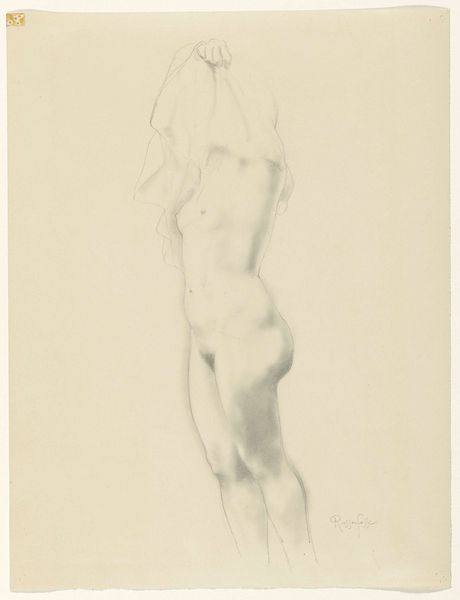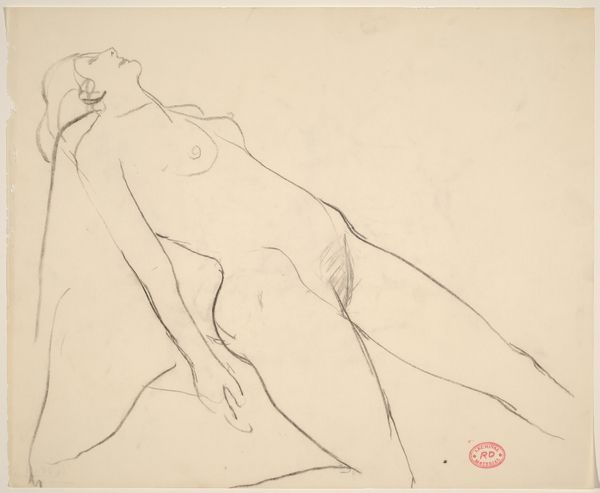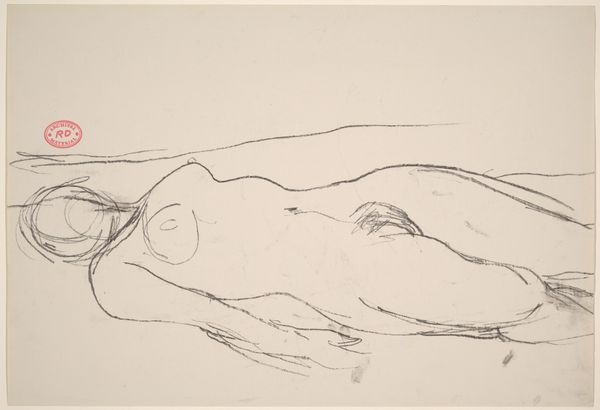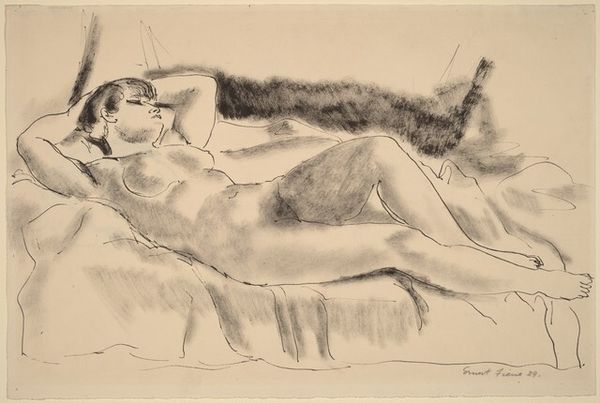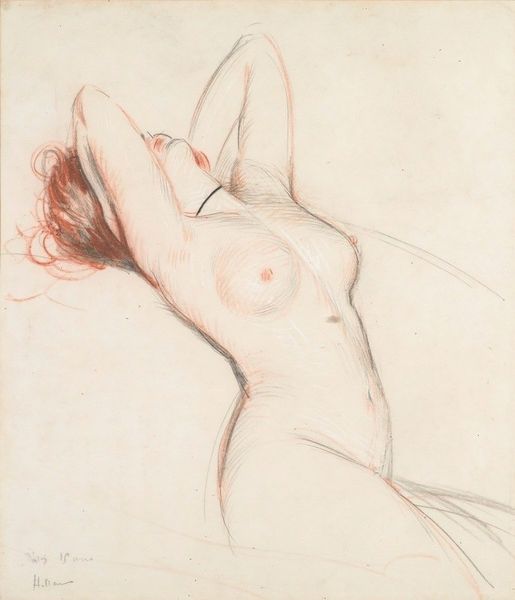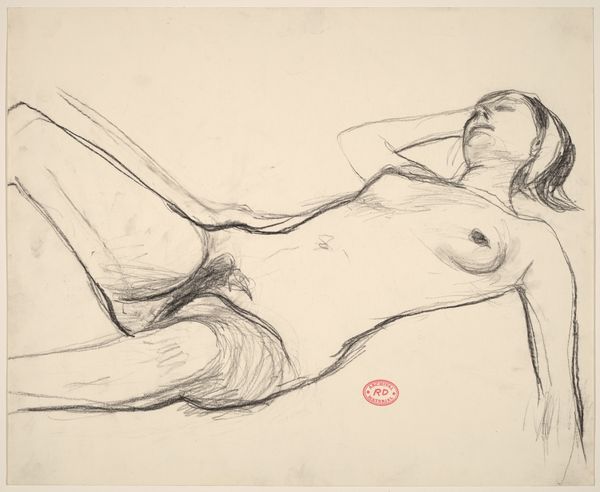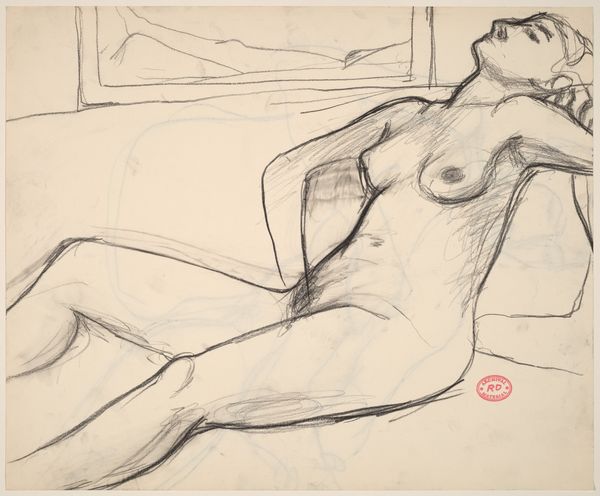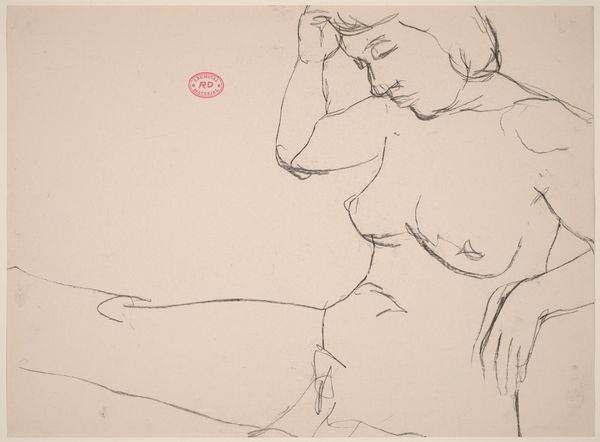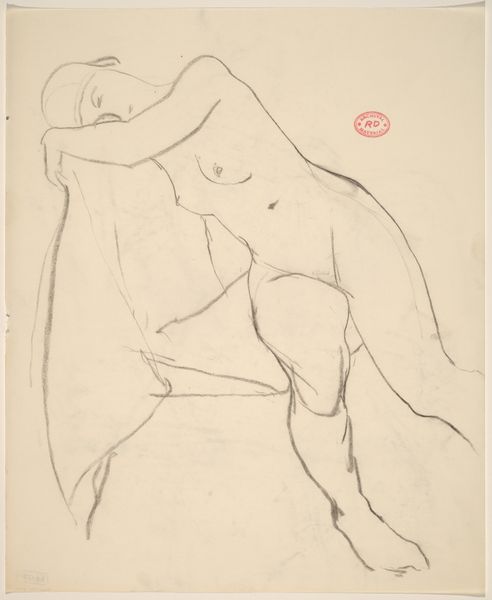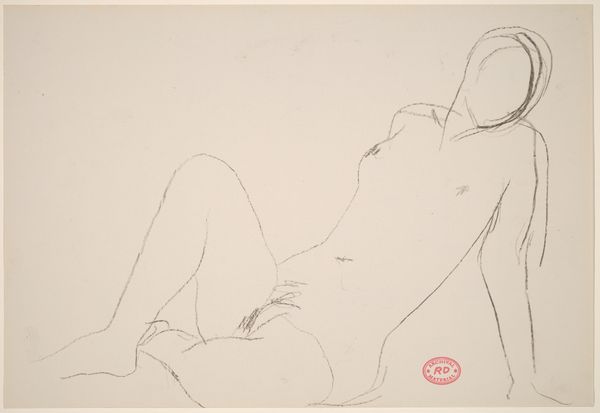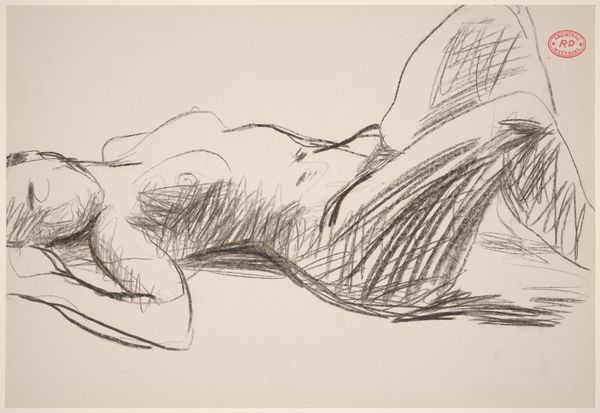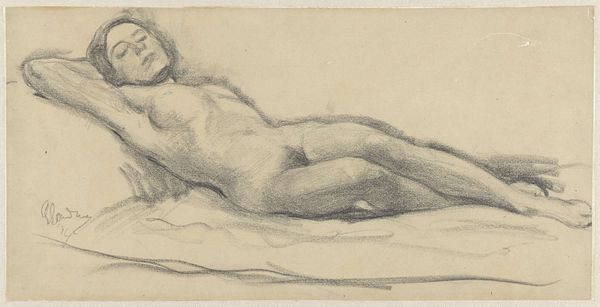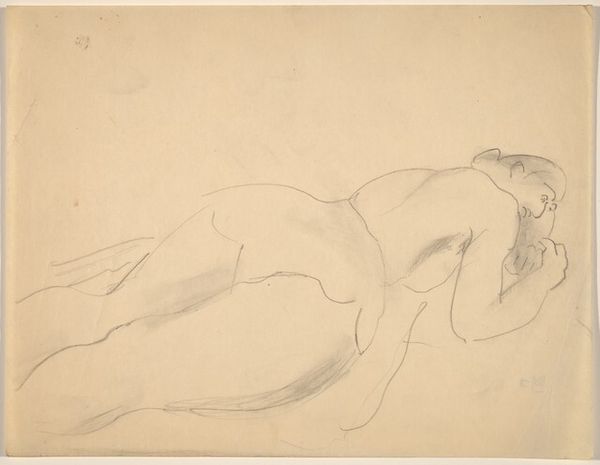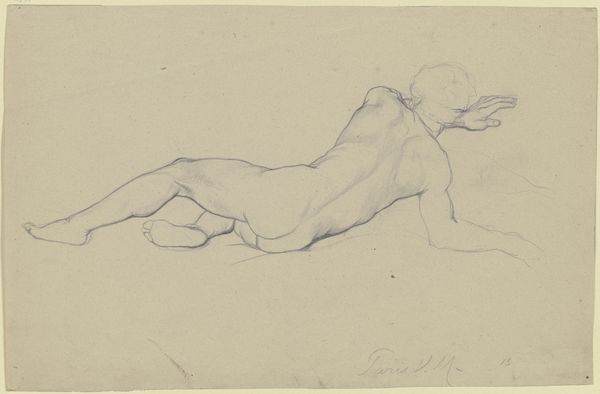
drawing, pencil
#
drawing
#
figuration
#
pencil drawing
#
intimism
#
pencil
#
academic-art
#
nude
Dimensions: height 211 mm, width 370 mm
Copyright: Rijks Museum: Open Domain
Editor: This drawing, titled "Liggende naakte vrouw, de armen onder het hoofd," or "Reclining Nude Woman, Arms Under Her Head," was created by Armand Rassenfosse in 1932, using pencil. There's something so intimate and vulnerable about it. What strikes you most when you look at it? Curator: I immediately notice the emphasis on the materiality of the pencil itself. See how Rassenfosse uses varied pressure to create different tones? This directly acknowledges the process, the labor, involved in producing the image. It's not just about representing the nude; it's about the *making* of the nude. Editor: That’s a great point. So, you're saying that by focusing on the materials and the process, he elevates what might traditionally be seen as just a study into something more substantial? Curator: Exactly! It challenges that traditional hierarchy of fine art versus craft. We can even think about the paper itself – its availability, its cost. These factors shape the work as much as the artist's intention. Is this drawing preparatory, a study for something larger, or does the simplicity of materials bring us closer to its essence? Editor: Interesting! I hadn't considered the economic aspects. Do you think the social context of 1932 impacted his choice of such seemingly humble materials? Curator: Absolutely. The economic landscape likely played a role. Artists often respond to the constraints and possibilities presented by their time, consciously or unconsciously. To really grasp this piece, we can think about how the accessibility and cost of different art materials shaped artistic production during this era. It compels me to view this drawing not only as a piece of academic art, but to engage with its social history, and therefore it's means of production. Editor: That's really fascinating; I will never see another pencil drawing in the same light again! Curator: Nor will I, at least until the next thought. Focusing on the physical dimensions, the labor, and societal consumption expands our understanding of art.
Comments
No comments
Be the first to comment and join the conversation on the ultimate creative platform.
